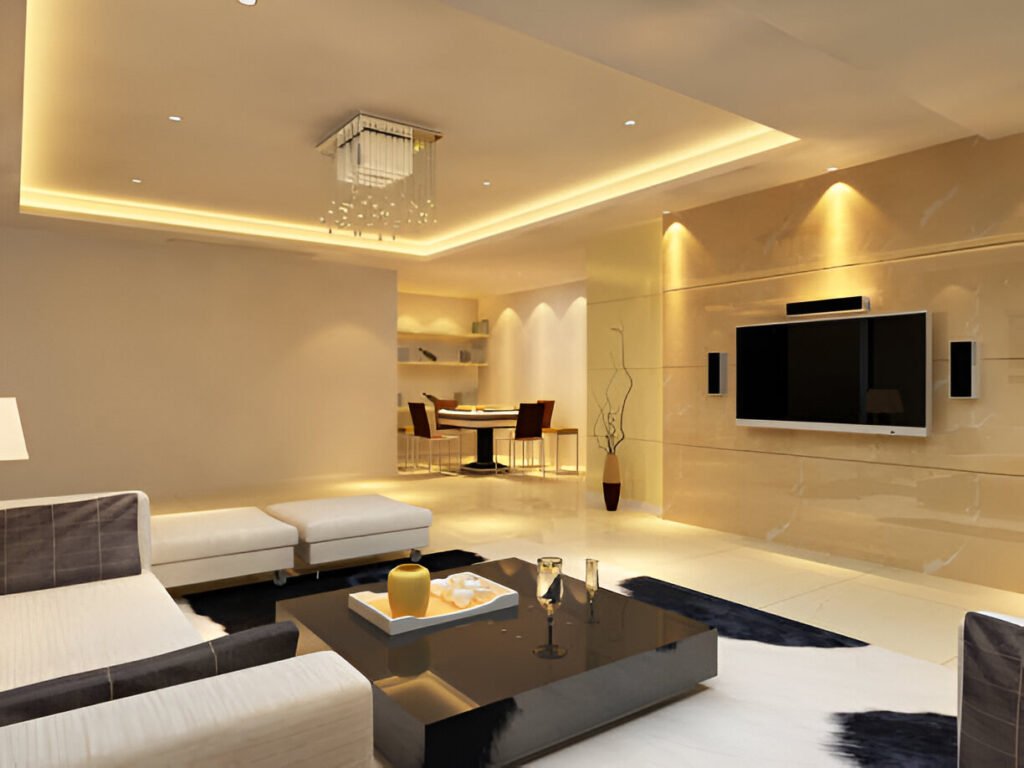While lighting might be that one factor which makes or breaks the perfect ambiance in your house, it is often overlooked. It’s easy to pass by the great impact lighting exerts-not only on appearance but also the functional elements of living space. The proper lighting makes a small room look bigger, a cold room warm, and a purely functional room inviting. So, how do you do that? Let’s enter a world of home lighting and find the best one which can be used to achieve that ambiance in place.

Lighting is perfect for creating atmosphere while at home and for the functionality it provides. No matter whether you are at home on a quiet night or hosting your dinner party, good lighting will set up the mood. How to do that successfully is first achieved by layering several types of lights for all occasions.
1. Understanding the Importance of Home Lighting
Think of lighting as the “mood creator” of your home. Just as a movie director uses lighting to evoke emotion in scenes, you can use lighting to evoke the right feelings in your home. Proper lighting design enhances aesthetics and helps improve functionality, making everyday tasks easier and more comfortable.
2. Types of Lighting
When it comes to home lighting, there are three primary types of lighting you need to know:
- Ambient Lighting: General lighting that provides overall illumination.
- Task Lighting: Focused lighting that helps with specific tasks.
- Accent Lighting: Decorative lighting that highlights features or adds drama.
Understanding how these three types work together will help you create a perfectly balanced space.
3. Ambient Lighting: The Base Layer
Ambient lighting is the foundation of your home’s lighting scheme. It’s the soft glow that fills the room, allowing you to move around safely and comfortably. Ceiling lights, wall-mounted fixtures, and recessed lights are typical sources of ambient lighting. Think of this as the sunlight in your room—the starting point from which everything else builds.
4. Task Lighting: Focus Where You Need It
Task lighting is all about function. It’s designed to illuminate the areas where you need focused light, like reading, cooking, or working. Desk lamps, under-cabinet kitchen lights, and vanity lights in the bathroom are perfect examples. This type of lighting makes it easier to perform specific tasks without straining your eyes.
5. Accent Lighting: Adding Drama and Flair
Accent lighting is like the cherry on top of your lighting design. It’s meant to draw attention to specific elements in your space, like artwork, architectural features, or plants. Picture lights, track lighting, and wall sconces are excellent choices for accent lighting. It adds depth and texture to your room, making it more visually dynamic.
6. Lighting Color and Temperature
The color and temperature of your lighting play a huge role in setting the ambiance. Warmer tones (around 2700K to 3000K) create a cozy, inviting atmosphere, while cooler tones (around 4000K to 5000K) are energizing and perfect for workspaces. Mixing warm and cool tones can also create a well-rounded, functional environment. Just imagine sitting in a room bathed in warm light after a long day—it’s like wrapping yourself in a cozy blanket.
7. Dimmers: The Secret to Versatility
One of the best ways to create the perfect ambiance in your home is by using dimmers. Dimmers allow you to adjust the brightness of your lights depending on the time of day, your mood, or the occasion. They can transform a bright space into a calm, intimate setting with just the touch of a button. Versatility is key when it comes to home lighting, and dimmers give you the control you need.
8. Lighting for Different Rooms
Different rooms call for different lighting strategies. Let’s break it down:
- Living Room: A mix of ambient and accent lighting to create warmth and comfort.
- Kitchen: Bright task lighting for cooking paired with ambient lights for a welcoming feel.
- Bedroom: Soft ambient lighting with task lighting for reading or relaxing.
- Bathroom: Bright, shadow-free lighting for grooming, complemented by soft ambient light for a spa-like feel.
Each room has its own needs, so tailor your lighting choices accordingly.
9. Outdoor Lighting: Extending the Ambiance Outside
Don’t forget about your outdoor spaces! Lighting your garden, porch, or patio extends your home’s ambiance to the outdoors. Use pathway lights, string lights, and wall sconces to create a welcoming outdoor space for gatherings or quiet evenings outside.
10. Energy Efficiency in Home Lighting
With energy efficiency becoming increasingly important, choosing the right lighting can reduce your home’s energy consumption. LEDs are the best choice for energy-efficient lighting, lasting longer and using less electricity than traditional bulbs. You’ll save money on your energy bills and reduce your carbon footprint—it’s a win-win.
11. Lighting Placement and Layering
Good lighting is all about placement and layering. Start with ambient lighting, then add task and accent lighting to fill in the gaps. Be mindful of where you place your lights to avoid harsh shadows or hubbell overly bright areas. Layering different types of lights creates balance and ensures that every part of the room is illuminated to perfection.
12. Choosing the Right Fixtures
Finally, choosing the right fixtures for your space is essential. Whether you prefer modern, sleek designs or vintage, ornate styles, your fixtures should complement the overall aesthetic of your home. Look for fixtures that match your style and provide the functionality you need.


